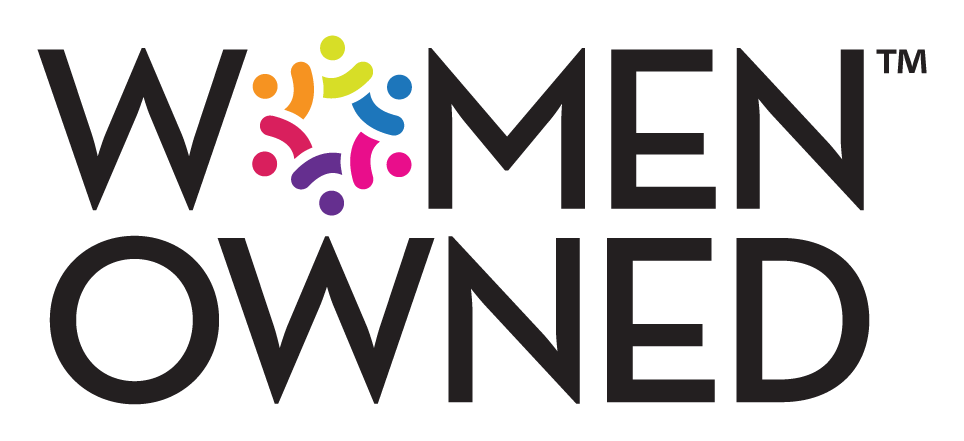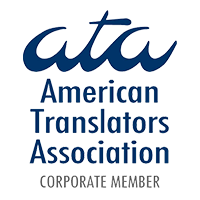Your knowledge base: The second brain of your school’s translation department
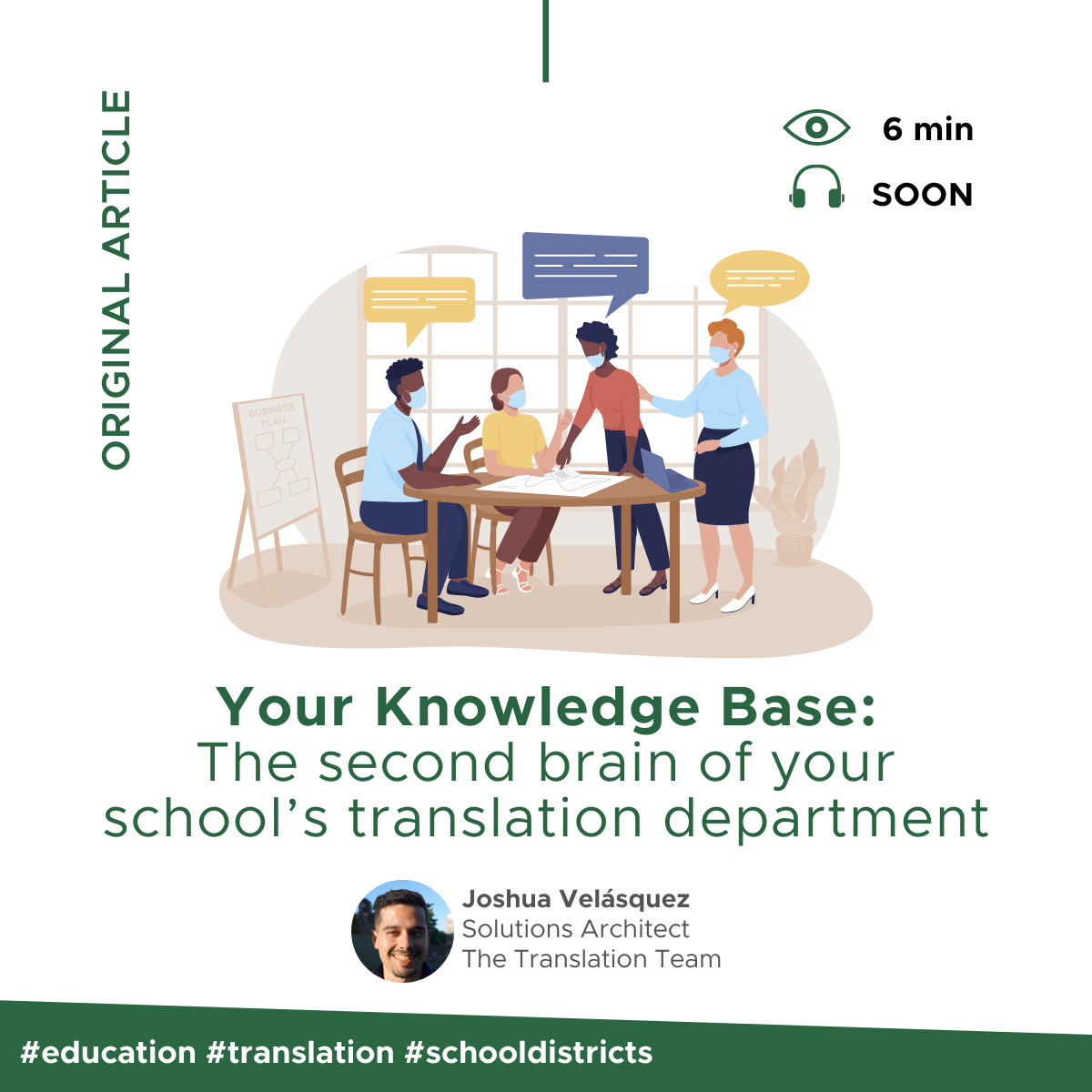
If there’s a common denominator among school districts with translation departments, it’s that they keep some sort of operations manual—a knowledge base—to store all the processes, discoveries, and best practices they build upon throughout their language access journey.
That knowledge base becomes a “second brain” that helps move them forward based on past learnings.
In this third and final installment of our Managing Your School District’s Translation Department series, we share tips on developing and maintaining a knowledge base that can serve as a compass for translation decision-making and troubleshooting.
Understanding the purpose of a translation knowledge base
In your daily work, whether as a coordinator of translation and interpretation, full-time district translator, or family liaison, many things can go right and wrong:
- Your translator’s CAT tool stops working.
- The new IEP workflow you proposed this week does the trick.
- You realize that you can’t use a specific piece of software on your new Mac.
- You learn a life-saving keyboard shortcut in Word.
- Your terminology isn’t showing up correctly in your CAT tool.
When was the last time you blocked out some time in the day to jot down your experiences?
For instance, if you couldn’t fully solve a few challenges, which substitutes or workarounds helped you and your team save the day? Do you have these listed somewhere?
Relying on your memory to remember exactly what you did in each scenario can be frustrating at best.
The purpose of a knowledge base is to help you and your team transfer all your answers to those problems to a descriptive document—a second brain—for easy reference.
Creating a simple knowledge base structure for your school district’s translation department
As your second brain, your knowledge base structure should be as simple as possible to facilitate searching.
Likewise, write it in clear and plain terms so that anyone can understand and follow the instructions and guidelines you enter.

Let’s break this down into quick steps so you can create your own knowledge base today:
- Grab a pen and paper, and draft your knowledge base structure using a simple outline. Use the sample above as an example.
- Create a new document in Google Docs or Word
- Start by giving your document a heading (e.g., Spanish Unified School District Translation KB), and then assign the Title paragraph style to it (see more, Google Docs; MS Word).
- Insert an empty table of contents below your heading.
- Now enter the topics from your draft and apply the paragraph styles Heading 1–4 accordingly.
- Begin writing descriptive steps for the most critical sections.
- Include screenshots as needed to support the information (e.g., menus, buttons.)
- Be sure to update your table of contents to reflect your progress.
You can divide your knowledge base structure into specific topics, such as CAT Tool, Terminology, Management, Troubleshooting, Legal, and so forth.
That’s all! Over time, you can refine the aesthetics or the structure of your knowledge base, but keep in mind that its unique goal is to serve as a reference for all who work on department translations.
The next step after creating your knowledge base is perhaps the most crucial one: To keep it updated so it reflects your team’s growing knowledge.
Scheduling knowledge base maintenance tasks
We understand it’s tough to make time to document your learnings. Similarly, blocking time to update your translation knowledge base can be challenging. We encourage you to regularly document the new troubleshooting and practical knowledge you generate during translation requests.
And what if you don’t? Well, you may find it difficult to remember what to do the next time you see that strange error in your CAT tool or Excel, or when that tricky English phrase keeps your translators up at night.
Did you know that we have a team specialized in translation in educational settings? We can help you maintain your termbases, translation memories, and style guides.
Reach out to us to learn more.
If there are two or more of you in the office, it’s helpful to appoint specific roles to each of you based on your respective skills. Here are example scenarios:
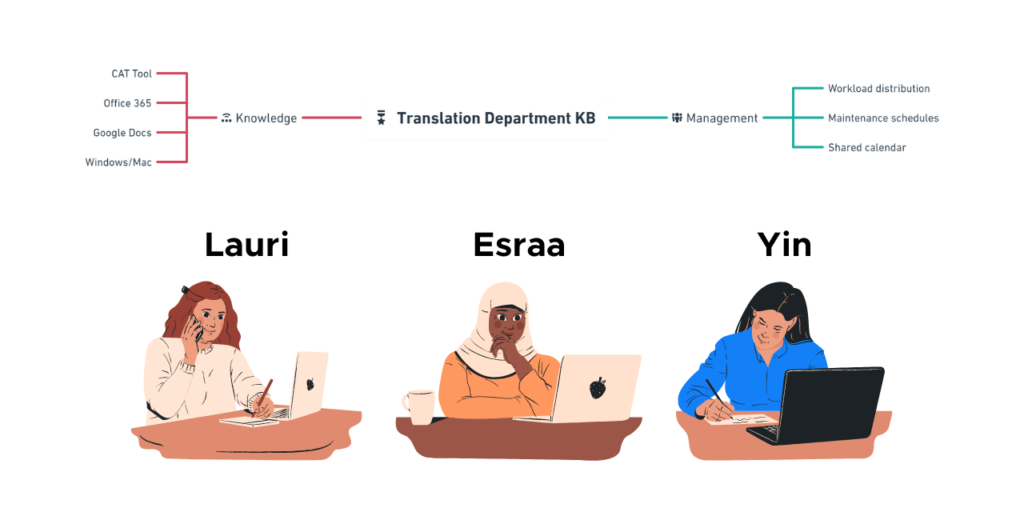
Yin does wonderful things in Word, so she can structure and maintain our knowledge base.
Lauri is the techie person on the team, so she can quickly describe how to perform specific actions in the CAT tool and schedule time each week to document it all.
Esraa knows everything about both Windows and Mac, and she’s also good at documenting things. Maybe she can help Yin with that, and write troubleshooting tips when Yin is busy translating or interpreting.
The three of them know how to align documents and clean up translation memories, so they can collaboratively write a section on how to do it.
Once you define these roles, the next step is to create a shared calendar in your favorite app (e.g., Google or Outlook) and block out time each week to perform these maintenance tasks.
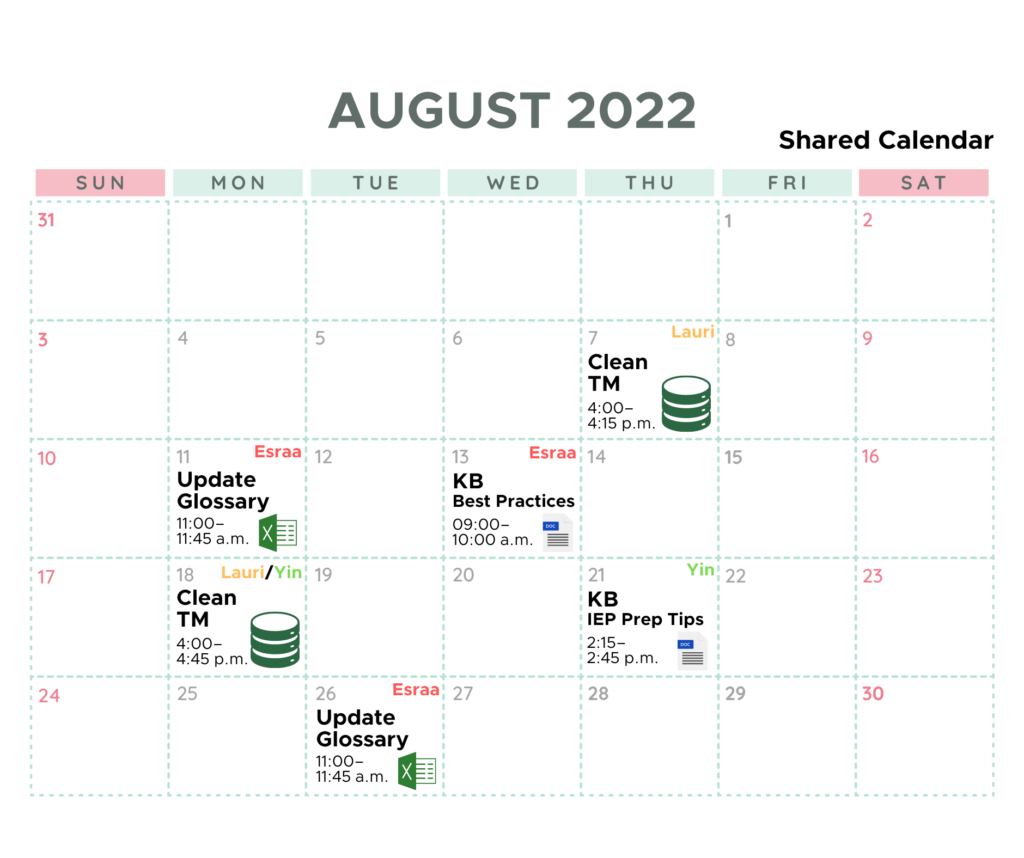
As you can see, it’s all about teamwork, discipline, and creating the habit of keeping your knowledge base and linguistic resources updated.
Over time, you and your team will put your “second brain” to work! You’ll see that you have all the resources and answers you need at your fingertips.
Start small, but definitely start!
If you’ve been following us since the beginning of this series (click here if you haven’t started yet), you may have picked up the three distinct characteristics of a successful translation program:
- It gives you control over every request that comes through your department
- It helps you and your team do more in less time
- It improves your team’s accuracy and consistency over time.
Each area comprises multiple elements, such as a CAT tool, a request tracking sheet, a team calendar, a knowledge base, a translation memory, and so forth.
These elements take time to customize, test, and finally implement.
Thus, if you believe that implementing a CAT tool won’t be feasible for this school year but that you can definitely see implementing a tracking sheet and a knowledge base, then prioritize what you can!
Pursue the low-hanging fruit; those quick wins will make a difference in your daily work. Use these articles as a reference for managing your school district translation department rather than as a one-size-fits-all approach.




